| Main Page - Back |
|
From SudokuWiki.org, the puzzle solver's site |

Intersection Removal
If any one number occurs twice or three times in just one unit (any row, column or box) then we can remove that number from the intersection of another unit. There are four types of intersection:
- A Pair or Triple in a box - if they are aligned on a row, n can be removed from the rest of the row.
- A Pair or Triple in a box - if they are aligned on a column, n can be removed from the rest of the column.
- A Pair or Triple on a row - if they are all in the same box, n can be removed from the rest of the box.
- A Pair or Triple on a column - if they are all in the same box, n can be removed from the rest of the box.
Pointing Pairs, Pointing Triples
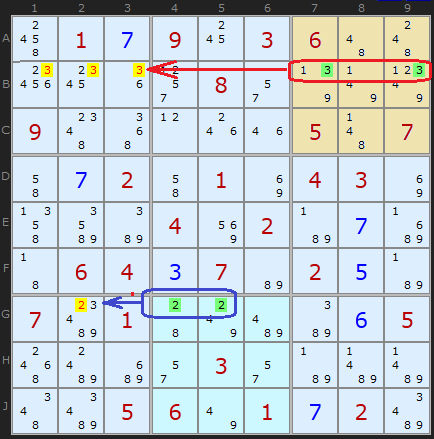
Here are two Pointing Pairs at the same time on this tough rated puzzle. The 3s in B7 and B9 are alone in box 3 and they are aligned on the row. So looking along the row we can remove all the 3s in Box 1. In a similar manner the 2s in G4 and G5 point along the row to G2.
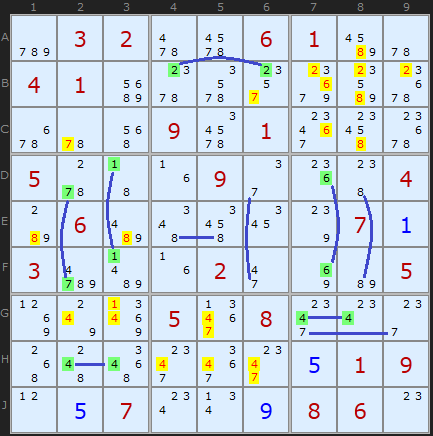
Now this is a rather special puzzle and a little extreme, but if we look at the whole board you can see I have highlighted a whole cluster of Pointing Pairs. It is obviously not necessary to spot everyone to progress the board but there are so many good examples it is worth looking at. The eliminations are highlighted in yellow. You should be able to see which eliminations belong to which Pointing Pair. A couple are consequences of a previous elimination.
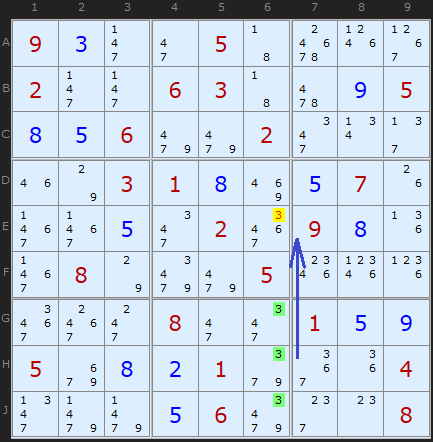
Here is a Pointing Triple found in a tough grade puzzle containing many wholesome and nutritious Pointing Pairs. All the 3s are found in G6, H6 and J6 and nowhere else in box 8, so they point up the column to another 3 which can be removed.
Box Line Reduction
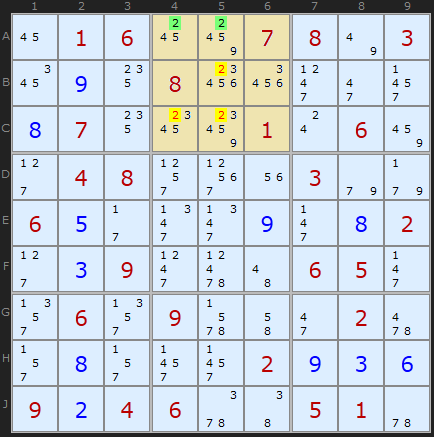
This Sudoku contains numerous Pointing Pairs and Box/Line Reductions and is worth stepping through from the start. Consider row A. The only 2s left are in A4 and A5 which means we should check the rest of the box. 2 has to go somewhere on row A and it will be in one of those two cells. So we can eliminate 2 from B5, C4 and C5.
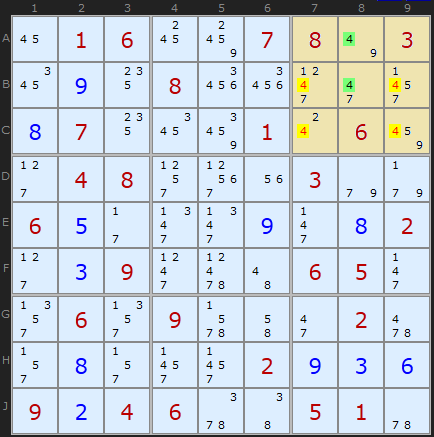
In the very next step of the same puzzle we have two 4s alone in column 8. That fixes 4 to be in either cell A8 or B8. We can remove the other 4s in box 3 and get our next solved cell: 2 in C7.
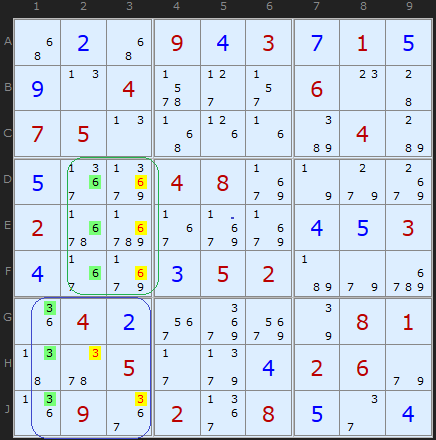
I've rolled two examples into one diagram here, I hope it wont be confusing. The one involving 6s follows on immediately from the first one found among the 3s (purely because it searches in order from 1 to 9). They are both 'triple' versions of Box/Line reduction.
In column 1 the 3s occupy G1, H1, J1 (shorthand = GHJ1) which are all in box 7. The solution is pinned to column 1 so the other 3s in the box must go.
The 6s are likewise pinned by column 2. You can see there are other 6s in column 3, in A3 and J3) which is why it's okay to remove the 6s in DEF3. You won't run out.
If you are a fan of Jigsaw Sudoku puzzles, you may want to read the articles on Double Pointing Pairs and Double Line/Box Reduction which extend the ideas here but are strategies possible only in the Jigsaw variant of the puzzle.